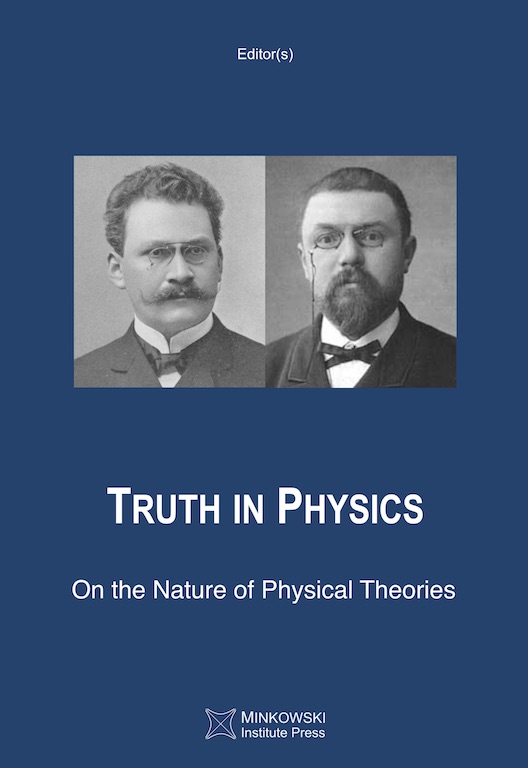 |
|||||||
|
|||||||
|
|
Call for editor(s) and contributions: Dear Colleagues, Minkowski Institute Press invites contributions to the volume "Truth in Physics: On the Nature of Physical Theories": http://www.minkowskiinstitute.org/mip/books/truthinphysics.html The reason for the volume is summarized below. Minkowski Institute Press (http://www.minkowskiinstitute.org/mip/books/) is an academic publisher, associated with the Minkowski Institute in Montreal, which is run by academics for academics and which has already published 75 books. As Minkowski Institute Press publishes valuable books that are out of print and are now in the public domain (the books are typeset in LaTeX), any suggestions for the publication of such books are always appreciated. Best wishes,
Vesselin Petkov
An example of such misconceptions is the inadequate view on the nature of physical theories (held by some physicists) that physical theories are only descriptions of physical phenomena, which do not tell us anything certain about the world since different theories can provide different descriptions of the same phenomena. Part of the art of doing physics is to determine whether some theories are indeed "just descriptions" - like the Newtonian, Lagrangian and Hamiltonian formulations of classical mechanics - or represent real features of the world. An even more specific example - many physicists, mathematicians and philosophers, starting with Hermann Minkowski, regard the concept of spacetime as representing a real four-dimensional world, whereas for others, including Poincaré, spacetime is nothing more than a mathematical space. Some, who have tried to argue, explicitly or implicitly, that Minkowski did not think spacetime was representing something real since it was merely a mathematical continuum, cannot answer even the obvious question "How could a mathematician announce so excitedly one more mathematical space?" The beginning of his 1908 epoch-making lecture "Space and Time" makes it exceedingly clear that he was not introducing just another abstract notion: "The views of space and time which I want to present to you arose from the domain of experimental physics, and therein lies their strength. Their tendency is radical. From now onwards space by itself and time by itself will recede completely to become mere shadows and only a type of union of the two will still stand independently on its own." As far as Poincaré's view is concerned, the comment of the French physicist Thibault Damour says it all - it was "the sterility of Poincaré's scientific philosophy: complete and utter "conventionality" ... which stopped him from taking seriously, and developing as a physicist, the spacetime structure which he was the first to discover." [The correct phrase should have been "he was the first to publish," because Minkowski arrived independently at the spacetime structure of the world but did not publish his results immediately "because he wished first to work out the mathematical structure in all its splendour" (M. Born).] What might have been also contributing to holding inadequate views on the nature of physical theories in recent decades is the negative attitude toward strong views on controversial issues (perhaps a result of irrelevant employment of "political correctness" in science). However, it is precisely the research efforts to arrive at a strong view on an open question (unambiguously based on the experimental evidence) that had been leading and can lead to advancements and breakthroughs in fundamental physics.
If interested contact mip@minkowskiinstitute.org
|
||||||
